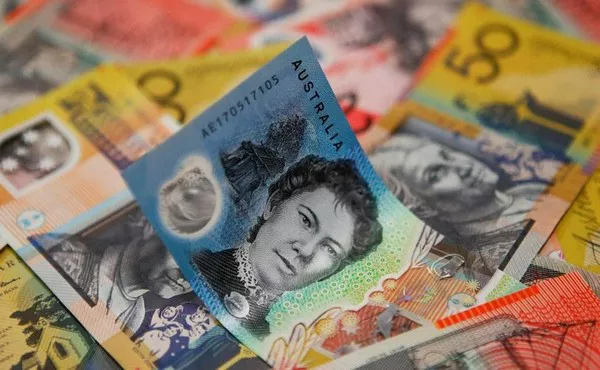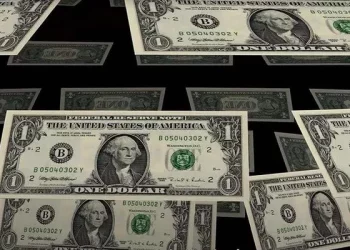First, what is futures?
Futures is completely different from spot. Spot is actually traded goods (commodities). Futures is not mainly goods, but standardized tradable contracts with some mass products such as cotton, soybeans, oil, and financial assets such as stocks and bonds as targets.
Thus, the subject matter can be a commodity (e.g. gold, oil, agricultural products) or a financial instrument.
It can be a week from now, a month from now, three months from now, even a year from now.
A contract or agreement to buy or sell futures is called a futures contract.
The place where futures are bought and sold is called a futures exchange.
1. There are currently four futures exchanges in China, three commodity futures exchanges: Shanghai Futures Exchange/Dalian Commodity Exchange/Zhengzhou Commodity Exchange, and one financial futures exchange: China Financial Futures Exchange (there is also a newly established crude oil futures: Shanghai International Energy Trading Center).
Foreign exchange is the debt held by the monetary administration (central bank, monetary administration agency, foreign exchange stabilization fund and Ministry of Finance) in the form of bank deposits, Treasury bills, long – and short-term government securities, etc., which can be used in case of international balance of payments deficit.
Including foreign currency, foreign currency deposits, foreign currency securities (government bonds, Treasury bonds, corporate bonds, stocks, etc.), foreign currency payment certificates (bills, bank deposit certificates, postal savings certificates, etc.).
At present, we often say that foreign exchange belongs to the category of spot, the accurate name should be foreign exchange spot contract trading, commonly known as “foreign exchange margin trading” due to domestic foreign exchange control, foreign exchange trading market is not fully open.
1. Trading time Foreign exchange market: basically 24-hour trading futures market: domestic futures are divided into daily trading and night trading, daily trading is 9:00-11:30 am every day (10:15-10:30 is a 15-minute short trading break) night trading starts at 9:00 PM, each variety ends at a different time.
2. Leverage foreign exchange market: leverage is mostly 100-400 times (some will be amplified to 1000-3000 times, with greater risk) Futures market: leverage is about 10 times, and the margin ratio of each variety is slightly different.
3. Delivery system Foreign exchange: There is no delivery due.
Futures: There is a delivery system at maturity, so the futures have contracts of different months, such as MA1805 contract, that is, methanol futures contract for delivery in May 2018.
Since futures have different month contracts, the price/trading volume/position of each month contract is different, we refer to the contract with the largest trading volume and position as the main contract.
At different times, the main contract of each variety will change, and these main contracts in different months in different time periods are linked together, which is called the main continuity.
Except for enterprises, individuals have no delivery authority and cannot enter the delivery month (there are special exceptions for some varieties in the previous period). For example, individual investors need to actively close their positions at the end of December 2017 for the methanol 1801 contract, and cannot enter the delivery month of January 2018 for this contract, otherwise they will be forced to close their positions by the exchange.
4. Different trading places.
Spot forex is usually traded between banks or through market makers, so there is often a bid-ask spread, which is the cost charged by banks and market makers.
However, foreign exchange futures are traded through exchanges, such as CME Exchange in the United States, which trades the largest amount of foreign exchange futures contracts in the world. It is a matchmaking transaction, and the transaction method is similar to that of stocks, so there is no spread.
5. Different contract restrictions.
Generally speaking, the contract value of foreign exchange spot is $100,000 as a standard hand. The formal transaction is also carried out by hand. The contract has no certain delivery period and can be held for a long time, but the inter-bank interest should be paid.
The exchange futures trading contract is the standard contract under the IMM settlement system.
Generally speaking, the contract of 3, 6, 9, and December is the main contract of the year, but there are also monthly contracts in the basic month. The trading period is normally the third Tuesday of the contract month as the final delivery date. If the position is not closed before, the delivery procedures must be completed for delivery.
Foreign exchange futures positions do not require any interest.
6. Investors are different.
Admittedly, spot forex trading is also large, but it is mostly between banks and market makers and between speculators;
However, foreign exchange futures are different. The main part of foreign exchange futures trading is the need for hedging, which occurs more among foreign trade industries and companies, while individual speculators only account for about 5% of the market share of foreign exchange futures trading.
From this point of view, the investment nature of the foreign exchange futures market is much heavier than the foreign exchange spot market.
7. Different security and reliability.
Admittedly, foreign exchange futures belong to the futures industry in all countries and are subject to strict supervision by the regulatory authorities in all countries, with high trading safety.
However, the laws and regulations on the supervision of foreign exchange spot trading have not been improved, and no country has a sound supervision mechanism for it at present. Generally, the supervision and regulation of foreign exchange futures are adopted after the incident.
In terms of reliability, foreign exchange futures have a special exchange to organize trading, so it is more reliable;
Foreign exchange spot is the tacit and spontaneous behavior between banks in different countries. Once political factors or other factors affect the quotation, it is inevitable that the quotation will be affected, which is also a cause for concern.
Conclusion: What is the difference between forex futures and forex spot?
This paper has explained the difference between foreign exchange futures and foreign exchange spot in detail.
I hope you can master these basic knowledge and not be a financial illiterate.


























